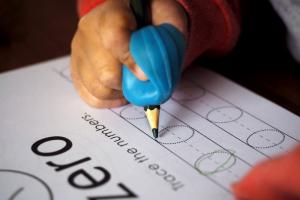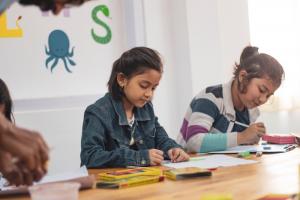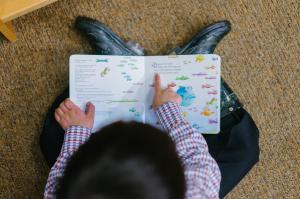Tips For Engaging Primary SEN Pupils With Literacy
We love teaching, but few would deny that it’s a tough gig. With classes of up to 30 children to educate, spanning a variety of backgrounds and ability levels, we often need to be 30 different teachers at once.
This includes being a teacher of SEN children, whether you chose to specialise or not.
The vast majority of children with dyslexia, autism, ADHD and broad-spectrum learning difficulties will find themselves in a mainstream class for some – or possibly all – of their school years.
Although an important step towards inclusion, this can be very daunting for teachers. After all, how do you ensure that a SEN child is able to learn effectively, without these challenges impacting on the rest of the class? It’s a balancing act, with wildly varying levels of support – some children may have an Education Health and Care grant, which allows for a specially trained teacher; however, in the majority of cases, you will find yourself needing to become the expert (with the help of your school’s SENCO, of course).
Teaching literacy can be particularly challenging, with the neural, auditory, articulatory, visual and motor skills of SEN children being tested to the limit. We know that early demoralisation in the classroom can have a lifelong impact, so the pressure is on – SEN children must be set up with the fair challenge, but also chance, to learn and enjoy literacy.
Here are our tips for engaging your SEN pupils with early reading and writing; and better yet, their classmates will enjoy these resources just as much.
1. Handwriting Tools
 Particularly useful for dyspraxic children who may struggle to engage the complex motor and cognitive skills required to write by hand, there are a range of tools available to make the task more comfortable.
Particularly useful for dyspraxic children who may struggle to engage the complex motor and cognitive skills required to write by hand, there are a range of tools available to make the task more comfortable.
Pencil grips
These make the process of learning to write far easier on a child’s muscles. Furthermore, sensory grips with soft bristles can provide some stimulation to aid concentration.
Writing slopes
If a pupil leans so far forward that their nose is practically on the paper when they write, a slope will help to ease their struggle. Similarly, its smooth surface will encourage the use of both hands (one to hold the pencil, one to hold the paper) and support bilateral coordination.
Positional rubber pencil supports
A step up from a pencil grip, a support will wrap around a child’s wrist and maintain the proper position of a pencil in hand, making writing more comfortable and helping to prevent aches.
Illuminated writing boards
These can provide reward and stimulation when experimenting with handwriting, to hold a child’s interest that little bit longer.
Cursive writing aids
Items such as grooved wooden blocks and tracing paper will help children practice the movements required for joined-up letters, helping to create the muscle memory needed for future writing tasks.
2. Timers
 If your class includes children with ADHD, you probably find that they lose track of time easily, resulting in a struggle to stay on task. Timers can help children to manage time effectively, so they make more progress in their writing and don’t waste the valuable school day.
If your class includes children with ADHD, you probably find that they lose track of time easily, resulting in a struggle to stay on task. Timers can help children to manage time effectively, so they make more progress in their writing and don’t waste the valuable school day.
However, there’s no reason why the timers themselves shouldn’t be engaging – and the children are far more likely to pay attention to them if they are.
Light-up timers
A timer that changes colour to represent time counting down is visually appealing to many, and easy for children to interpret.
Liquid timers
A timer doesn’t need to be a source of stress – watching coloured water droplets is a time management tool which is easy on the senses.
Audible timers
Very much at the teacher’s discretion in regard to if they will distract the rest of the class, an audible timer can help to give children who are easily distracted the reminders they need – without having to constantly intervene.
3. Sitting Supports
 Are you sitting comfortably? For many SEN children, the answer is no – they would almost always prefer to be doing something else.
Are you sitting comfortably? For many SEN children, the answer is no – they would almost always prefer to be doing something else.
Fortunately, there are a range of tools available to help children feel more relaxed when sat at a desk to write, as well as aiding their posture.
Seat wedges
These firm, tilted cushions will reduce strain on joints and ligaments, as well as encouraging active sitting. In doing so, the child will concentrate more on their work, and less on how they are positioned.
Foot balancers
When children can’t help but fidget, constantly asking them to sit still can be more of distraction than the fidget itself. By allowing children to discreetly move a balancer beneath their feet, fidgeting won’t distract the class, while still providing relief to the child.
Weighted blankets
Weighted items apply a deep, calming pressure, as well as supporting focus. They don’t need to be wrapped up like a burrito – placing one across their lap is fine.
4. Visual Discrimination Aids
 When children are showing signs of dyslexia, visual discrimination aids can help them to perceive the shapes of letters, by steadying visual attention and improving eye control.
When children are showing signs of dyslexia, visual discrimination aids can help them to perceive the shapes of letters, by steadying visual attention and improving eye control.
Coloured overlays
Certain colours, such as deep yellow or blue, can help to ease the visual disturbances that some dyslexics experience – such as text ‘fizzing’, glaring or doubling. All of these symptoms can cause difficulty distinguishing between letters, as well as inducing headaches and generally putting children off trying to read. A coloured overlay can be placed over any book or worksheet, helping the child read more comfortably.
Visual tracking windows
Often the same size and shape as a plastic ruler, a visual tracking window has a thin gap through the middle, intended to be layered over text. This allows children to focus on a single line or word at a time, and not be confused by the amount of words on a page.
5. Creating Quiet Spaces

If a SEN child becomes overwhelmed, it may help to have a quiet spot where they can sit and read by themselves.
A pop-up tent containing a beanbag, soft lighting and a collection of books may be just what they need to re-focus; and of course, the whole class will likely benefit from some quiet reading time, too. Just make sure that everyone respects a ‘one at a time’ rule, so all the children know that when the tent is occupied, that child needs some space.
How can Mighty Writer Help Engage Primary SEN Pupils?
Mighty writer is a highly Visual and tactile resource. It engages children by allowing them to use pictures and symbols to create and edit sentences. creating different meanings and effects. most importantly it teaches children how to then picture their ideas and sentences in their head and move them around to create the desired effect - exactly what they need to be able to do to be an author. Please click on the link below to find out more about the impact mighty writer could have in your classroom.

